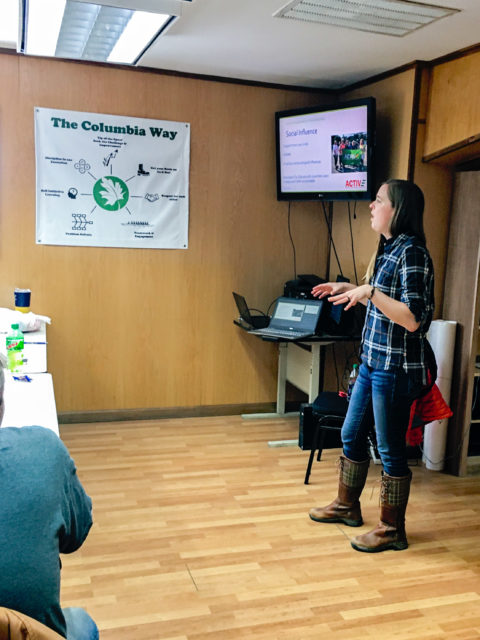
The concept of workplace wellness has been around for decades, and while nothing in the name insinuates wellness is only for certain work types, many still associate workplace wellness with white collar jobs.
As a result of COVID-19, the U.S. has highlighted who is considered essential workers. Many are those working physically demanding, low wage, and/or blue-collar jobs. Consider sanitation, manufacturing, agriculture, box stores, and fast food establishments as just a few examples. These workplaces are a great lens to see how broadly workplace wellness can apply and how to modify your wellness plan to fit any work environment.
These workplaces can come with their own set of challenges for implementing workplace wellness, though. Here we’ll look at a few common challenges as well as solutions. A culture of wellness is possible in any work environment!
Working in Shifts

Challenge: Shift work is especially common in manufacturing jobs and the restaurant industry. One challenge here is ensuring your wellness program is reaching all your staff.
Shift work can also contribute to health risk factors that may be less prevalent in other work environments. Sleep and fatigue are areas a wellness program may want to address. Many industrial jobs have employees working 12-hour shifts, 7 days a week year-round rotating one week on and one week off. This can affect one’s sleep schedule, especially if they work night shifts, but must resume other daytime duties on their off weeks. Sleep and fatigue is not just important for individual wellness and productivity, but for workers’ safety as well.
Solution: One way to ensure your wellness program is reaching all shifts is to establish a wellness committee, or identify wellness program champions. Committee members or champions should be representative of all areas of your workplace. For example, if your workplace is comprised of four shift crews, your wellness committee should have representatives from each. Track employee participation throughout your program to see where more support may be needed.
To address health risks related to sleep and fatigue, you could take time to integrate this into your wellness program education. Consider offering handouts or presentations to employees to learn how to identify and manage fatigue for example. Additionally, you may consider offering a sleep study clinic which could even help employees identify issues such as sleep apnea that they may not have realized was affecting them.
Wide Range of Education Levels
Challenge: One great thing about blue collar industries is their ability to have fewer employment barriers based on education. However, this means your employees may represent a wider range of education levels. The challenge becomes communicating your wellness program materials in a way that is accessible to your entire employee audience.
Solution: Keep it simple. There is rarely need to go wild with medical terms to effectively convey concepts of wellness. For example, a presentation on stress relief may focus on identifying stress, and providing strategies, such as physical activity, to manage it. It is not necessary to discuss the chemical bonds of various stress hormones. However, you can always offer chances for employees dive deeper to suite their interest. Having additional resources ready is a great way to let employees customize and further their wellness education.

Limited Access to Technology
Challenge: Employees with more labor-intensive jobs may not have access to communication technology while on the clock. And it can be risky to assume all employees will have access to a computer off the clock. Therefore, you’ll need to consider how to best disseminate information to your employees.
Solution: “Stall talk” continues to be a timeless and effective way to get information to the people. That is, simply placing flyers inside your bathroom stall doors. Handouts, or posters in communal areas can work too. Perhaps the best step you could take is to ask your employees. Consider a survey that asks how they prefer to receive information. You’ll receive different responses, and should be prepared to use multiple avenues of communication. But with employee feedback, you will know where to best put your energy.
Want to learn more about what a wellness program could look like at your workplace?
Active SWV partners with worksites of all types. Beckley Sanitary Board, for example, has employees in the field and in the office. Columbia Forest Products employs primarily manufacturing workers.
If you’re interested in what a wellness program could look like in your workplace, contact Workplace Wellness Director Veronica Crosier at veronica@activeswv.com. Active SWV is here to provide free technical assistance, professional development opportunities and guidance the whole way from planning to implementation.

